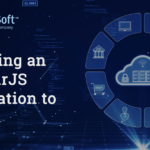

In this blog, we highlight the process we used to set up an RPO (Recruitment Process Outsourcing) for a healthcare staff placement company. Macrosoft has been working with this company for several years and moving to the RPO was the next logical step in our relationship. The RPO was set up during the first half of 2021 and represents Macrosoft’s first formal RPO.
We are now in the process of setting up a second and third RPO for additional clients. Beyond simply describing the process, we also discuss the benefits for the client. Each new RPO has its own unique characteristics and that is what is presented in this paper. Similar case studies will be developed for the next projects as they come along.
Recently Macrosoft has introduced a new recruitment service offering: RPO (Recruitment Process Outsourcing).[1] [2] In essence for each new RPO arrangement we are setting up a dedicated recruitment team specialized entirely for a particular client. The RPO team for the healthcare staff placement company consists currently of two dedicated experts. We expect that number to grow as we continue to expand the relationship.
Advantages of the RPO for the Healthcare Company
From the healthcare company’s standpoint, the RPO team offers five major advantages:
Dedicated Team
The two people on the team are dedicated entirely to the client’s needs. So, the client can expect to get a steady amount of work every day.
- When one person is out for a few days, Macrosoft supplements the team with a resource from the general recruitment team. While that person will not be as specialized as the dedicated resource, it will provide skilled coverage.
Specialized Skills
We have ensured that both team members have the right recruitment experience in both the healthcare and medical care sectors.
- The best-case scenario we always strive for is to seek out recruiters with experience as close to the client’s needs as possible. In this case, the need was in the area of healthcare and medical care.
Priority Service
The team responds immediately to any high priority requests that come from the client team.
- Since the client’s team is dedicated, the client can change the priorities as needed.
Domain Know-how
As these two individuals continue to work for this client, they will become ever more familiar and experienced in exactly what the client needs to fulfill its staff placement needs.
- Anyone who does recruitment for a long period knows how nuanced and delicate the process of finding the right candidate is. Detailed domain knowledge is essential to doing that process successfully.
Best Data Sources for Specialized Candidates
Also, as these two RPO recruiters work finding candidates day in and day out, they learn to zero in on the best sources having the best candidates.
- It’s like finding the best spots for fishing
- Another point – as part of a specialized RPO arrangement we will work with the client to identify specialized public and private (paid) data sources of good candidates (beyond the general job boards and LinkedIn social sites, all of which we use widely in our IT recruitment services) and sign up to get access to these specialized data sources. In the case of our first RPO we are still evaluating with the client possible new sources of good candidates and as soon as we can find the best sources, we immediately sign up for them.
Process Steps in Setting up the RPO
There are five major steps we go through with a client to set up a new RPO, as we did with the Healthcare company. The 5 steps are as follows:
Assessment of Client Needs
First, we work with the client to determine need for an RPO and the starting size of the team. Two factors that play into the need for an RPO and size of the starting team are:
- Does the client have a steady stream of new openings that will keep a dedicated team busy on a continuous basis?
If there is not a steady stream of new openings, then it is not economically feasible to have a dedicated team of recruiters. As a rule of thumb, we look for about ~10 new client openings per month for each recruiter added to the RPO team. So, if a client expects on average 35 new openings a month, then we would suggest starting with 3 recruiters on the RPO team. For client openings less than 10 we recommend two recruiters to provide a level of redundancy for the team
- Is there a need for highly specialized candidates?
If the client has highly specialized positions, then our general IT-focused recruitment team will likely not be able to do well in fielding these specialized positions. That was the case with the Healthcare Staff Placement company. They have openings for doctors, nurses, medical support staff, and hospital support staff including staff experts for many of the top business and medical systems used in hospitals and in doctors’ offices. This was not an area that our generalized IT recruitment staff were familiar with, so that almost by itself demanded that we investigate a dedicated RPO team for this client.
Recruit RPO Team Members
We go through a highly selective process in adding people to our general recruitment team and now we are doing the same for any new RPO team members we add. In fact, we recommend a three-step process.
- We recommend that the client send us all their job requirements from the last 3 months, and our recruitment team will then dissect them in detail to find out all the types of specialized positions the client needs candidates for. An alternative is for a client to pass us their job requirements in real time for about 2-3 months and we try to handle them via our general recruitment team. This is in fact what happened in the case of the Healthcare company. Over a period of time, we determined the job requirements they were sending us were too specialized and too far out of our normal sweet spot that we could not handle them well within our general IT recruitment team.
- Once we have completed the analysis of the client’s job requirements, we then put together profiles of the types of people. Once the profiles are finalized, we begin the recruitment process. Remember, we are staffing the team within our Macrosoft India organization, so the candidates we are looking for must reside in India. Luckily for us there are large numbers of recruiters working in India, so we have a large pool to select from. Also, now, and probably continuing indefinitely, all people in Mac India are working remotely, and that means we can select people from anywhere in the country.
- As candidates are found, we can provide the option for the client to interview the candidates and be in the decision process of whether to hire or not. In the case of the Healthcare company, because of our long working relationship in other areas, they were fine to rely on our team’s judgement for the first 2 people added to their RPO.
All of this can be a bit of a time-consuming process for both us and the client, but we feel it is critical to ensuring we are setting up a highly targeted RPO that truly meets the client’s needs. From the time the client provides us with a backlog of their job requrement’s to the time of getting the first ~2 people on board with the RPO can be a period of 4-6 weeks.
Training of RPO Team
All new recruits go through an intensive training process to learn all the best practices followed by our Recruitment Organization. This training process applies to all new people brought into our Recruitment Organization and thus applies to those brought in under a new RPO. This training period takes several weeks after which the new people shadow the more senior members of our team for a period of several more weeks to ensure they have internalized all the best practices we need them to follow. So, the total time is about a month before the new recruiters can start to handle the job requirements for the RPO directly.
So, the total time for steps 1 and 2 (hiring the right people and training them in all best practices) can take up to 2 months before a new RPO team is up and running on its own with 1-2 dedicated people. Additional people can be added to the team as needed in a much quicker time-frame.
During that transition period Macrosoft will work with the client to field new requirements using some of the senior people we have in our general IT recruitment team. This is an added benefit we can offer to new RPO clients and is only possible given the size and depth of experience of many of the people in our Recruitment Organization.
Operations of the RPO Team
The Healthcare company’s RPO is now up and running. Candidates are being found and successful placements are occurring now. A lot of things are happening ‘behind the scenes’ in this process step, including the following 4 activities:
- Management Oversight of Team – Macrosoft’s Recruitment Team managers meet almost daily with the RPO team members to check in on the work and ensure that the team is focused and working to meet the client’s priority job requirements.
- Weekly Meetings with Client – For the Healthcare company, the Macrosoft managers plus the RPO team members meet with the client team once a week on a Teams Meeting. Status of the work, and any specific issues get discussed on these meetings. The goal is to ensure smooth operation of the team, and ever improving efficiency and productivity of the team results.
- Job Reqt Submittal Process – In addition to using a simple (but tedious) email process back and forth, we can work with the client to set up a more automated process where the client submits new job requirements into our system as they come up and our team submits candidates also through this system as they find suitable candidates for the client to review. The system can also be used for scheduling of interviews and keeping status of background checks once a candidate has been accepted by the client. we recommend this automated process. For the Healthcare company we are now using the email process.
- Specialized Job Boards – One of the key advantages of a specialized RPO is finding and using specialized job boards that contain candidates with the right skill sets for the client’s job requirements. As part of the operation of an RPO we work with the client to identify any specialized job boards or LinkedIn groups or other sources where the client believes we are likely to find well qualified candidates. If any such sources exist, we will work with the client to gain access to these. This is a critical step in setting up and ensuring success of the RPO. In the case of the Healthcare company, we are still in the process of working with then to find the most suitable data sources to tap into. We believe finding and using these specialized job boards is a critical success factor for our RPO’s.
- KPI Tracking – While the team assigned to an RPO is separate and dedicated, it also remains subject to the overall management supervision and oversight as done for our entire recruitment team. The dedicated team will be subject to the same set of KPI’s that are used in the entire recruitment team. This ensures that the dedicated team is utilizing all the best practices our company has in this area and is performing well enough in terms of these KPI measures. We believe this is a critical positive feature that we include in all our RPO arrangements. We share these KPI results with our RPO clients.
Among the list of KPI’s are the following counts and percentages:
- New job requirements per week.
- Submittals counts to each job requirement by each team member.
- Interviews scheduled for each job requirement by each team member.
- Placements made for job requirements by each member.
- Data Sources of candidates submitted for each job requirement.
In addition to these discrete KPIs, we also include client comments and rankings for each of the candidates the team members submit for each job requirement. There are a several other measures and scores we keep track of. In essence we try to quantify the ‘science’ part of recruitment as much as we can.
For the ‘art’ side of recruitment we rely on regular management reviews of each recruiter, done by senior managers within the Recruitment Organization. The point of these reviews is mainly to provide guidance and know-how to each recruiter to enable them to succeed.
RPO Pricing Model
Since the recruiters in an RPO arrangement are all dedicated to a client, the pricing model we work out with the client reflect this. With that in mind we are more than happy and flexible to work with a client on any number of different pricing arrangements, including options of the types listed below:
- Client pays a fixed price per recruiter per month. This is the least desirable in our view.
- Client pays a nominal monthly fee per recruiter per month and there is an added commission for each successful closure.
- Pricing is entirely commission-based. This is the best option in our view. The only caveat for this arrangement is the need for the client to keep the team of recruiters fully busy continuously. The commission per every candidate placed with the client can be any of the following:
- Fixed dollar amount per closure per month.
- Fixed dollar amount per hour the consultant works each month.
- Fixed percentage of bill rate per hour the consultant works each month.
Our view is the 3rd arrangement is the best for both parties. It provides us with the right incentives to find exactly the right candidates for each position, which of course is also good for the client. That is the option we are now operating under for our first RPO with the Healthcare Staff Placement company.
Final Comments
This concludes our case study review of our first RPO for our Healthcare staff Placement Partner. We are very excited about being able to offer this new RPO arrangement to our clients and hope we will be able to set up many more in the coming months. Our company is now in the midst of a very substantial multi-year expansion of our recruitment team in Mac India so now is the right time to be offering this arrangement to our clients. Contact us to find out more.
[1] Check out our web site for in-depth discussions on the capabilities of our recruitment organization and our new RPO service offering. See, for example, “Macrosoft Development Teams Line of Business” and “Macrosoft’s Talent Acquisition Engine” published on our web site over the last 3 months.
[2] For the RPO service offering see “RPO: Recruitment Process Outsourcing, Macrosoft’s New Service offering”.
By Sankar Nath (Richard), John Kullmann, Ronald Mueller | January 19th, 2022 | Staffing Services
Recent Blogs


Advantages of Technology and IT Companies Partnering with Staffing Firms Offering Visa Sponsorship
Read Blog

CCM in the Cloud: The Advantages of Cloud-Based Customer Communication Management
Read Blog

The Rise of Intelligent Automation: A Roadmap for Success
Read Blog


 Home
Home Services
Services






































